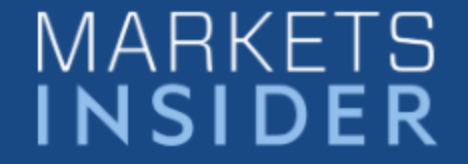The Internet of Things is coming and it will affect every facet of our lives. The U.S. Government is hoping tech leaders can jump in and help.
Analysts, technology companies, researchers all agree, the next big wave of the Internet is the Internet of Things (IoT). Now lawmakers and regulators in the U.S. Government are trying to get up the learning curve and out in front of the many issues that a future filled with connected devices creates. These issues include improving interoperability between competing IoT frameworks, security and privacy as personal and commercial data proliferate, cooperation between public and private institutions advancing IoT, and the infrastructure necessary to enable IoT to grow.
Recently, Dean Garfield, President and CEO of The Information Technology Industry Council (ITI) testified before national lawmakers on the Internet of Things. ITI represents 61 companies from all technology verticals. The testimony highlights the transformative power of the IoT revolution under way: “The Internet has transformed the world in ways we could never have dreamed possible, and the IoT is expected to have an even greater transformative impact in our lives, our economy, and our society” says Garfield.
The Biggest Tech Companies are Already Bullish on IoT
In making the case for the growing importance of the Internet of Things Garfield points to ITI statistics and other external reports. According to Garfield, ITI companies are already investing in IoT, with 80 percent of companies already attributing revenue growth to the sector and 87 percent of CEOs expecting long-term job growth from IoT.
Garfield also cites an Accenture report that expects the commercial and industrial IoT category to surpass $7 trillion by 2030. This will account for over 70 percent of value from IoT, according to a McKinsey report, which estimates an IoT potential economic impact between $4-$11 trillion by 2025. The remainder of the testimony is aimed at providing background on Garfield’s policy recommendations for ongoing innovation and growth in IoT.
ITI President calls for a National IoT Plan
Within the testimony Garfield stresses the balance of public and private sector in developing IoT, pushing for more collaboration but strongly warning about overregulation. With respect to Smart City initiatives where public and private overlap will be key, he quotes “‘Congress’ role is to learn to do only what’s necessary and no more’” and goes on to warn “the estimated economic benefits often cited are dependent on a fertile innovative environment comprised of favorable policies and minimal regulatory barriers.”
“The estimated economic benefits often cited are dependent on a fertile innovative environment comprised of favorable policies and minimal regulatory barriers.”
The specific areas that Garfield addresses are privacy and security, data usage, and infrastructure. Garfield cautions against a one-size-fits-all approach to security, particularly given the wide range of IoT applications. He also refers to the ITI cybersecurity principles, which he argues are applicable to IoT, and advises against the creation of an entirely new set of principles. With regard to data, is bullish on companies to “appropriately respect and protect user privacy…critical to incentivize consumer adoption of these technologies” and says that “new constraints…may hinder innovation.”
Another limiting factor on the growth of IoT is network infrastructure, and Garfield explains that “continuous investment in our networks will be necessary…and only with ubiquitous, high-speed, affordable broadband will the public and private sectors be able to derive the maximum potential the IoT will offer.” Central to managing this infrastructure will be more efficient spectrum management and federal government policies to encourage private sector investment in wired and wireless networks.
Garfield also highlights interoperability as a necessary element to growth explaining the importance of ensuring that IoT devices can communicate and permit streamlined data flow. “Open standards will also promote industry innovation and establish a better defined technology evolution path” says Garfield. Accordingly, the private sector should lead development of the standards and include the public sector to share best practices.
Finally, after providing ample caution against overregulation, Garfield outlines the importance of a national plan that encourages and funds public-private partnerships (PPPs). He describes: “successful PPPs will make IoT deployments an attractive investment for government and industry, and promote innovation, scalability, and sustainability. The government, according to Garfield, should “lead by example.”
Policy Recommendations for the U.S. Government and Internet of Things
Before concluding his testimony, Garfield outlines four specific policy recommendations, summarized here:
- An IoT Strategy and Advisory Council to produce a national IoT Strategy,
- A Government role in encouraging industry alignment of private sector developed security and interoperability solutions,
- PPPs to accelerate IoT adoption and U.S. global leadership,
- Increased availability of spectrum for mobile broadband.
See the link to the official ITI press release or testimony transcript below for more detail below.
Servato offers a solution for backup battery management that extends battery life and allows for advanced remote monitoring. Servato is currently working with companies in the telecom industry to protect Outside Plant sites and ensure connectivity through Active Battery Management.
Additional Reading:
ITI News Release: http://www.itic.org/news-events/news-releases/iti-s-dean-garfield-calls-for-developing-a-strategic-national-plan-for-the-internet-of-things
Transcript: http://www.itic.org/dotAsset/a/6/a69d5314-1afa-4af0-9394-59684908a004.pdf












